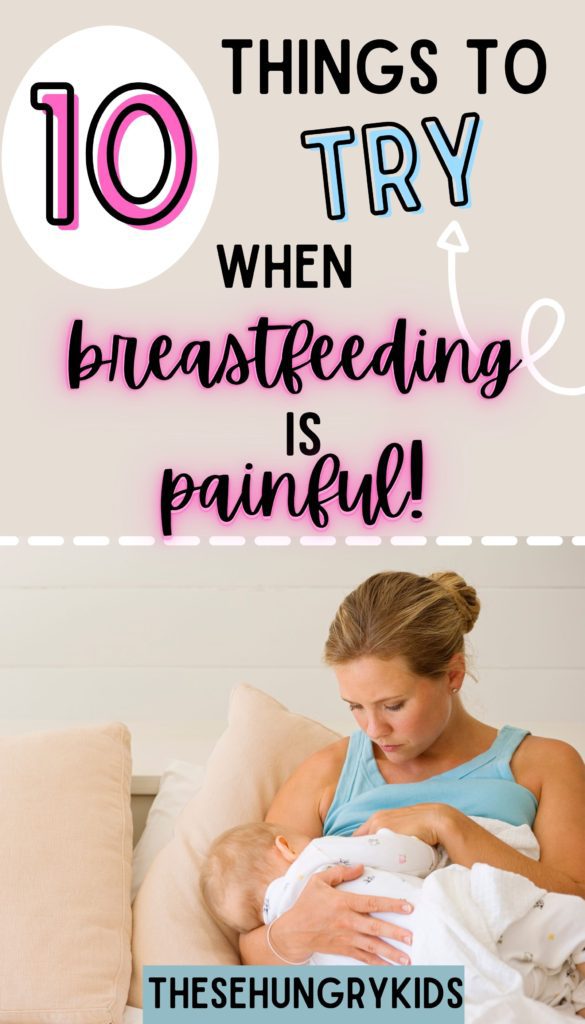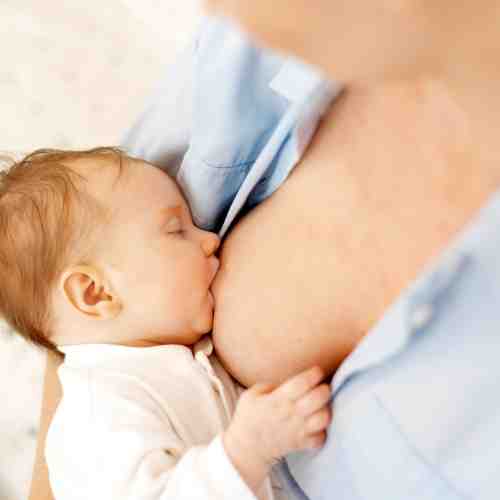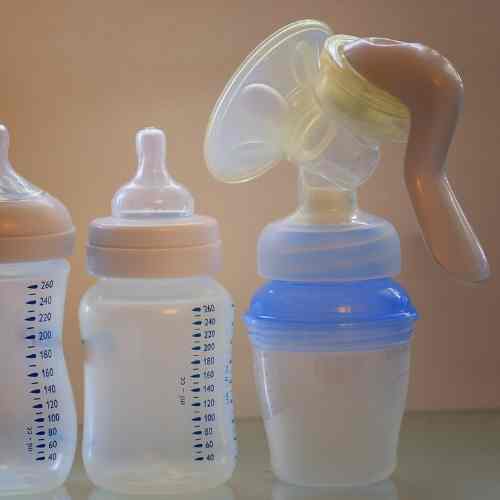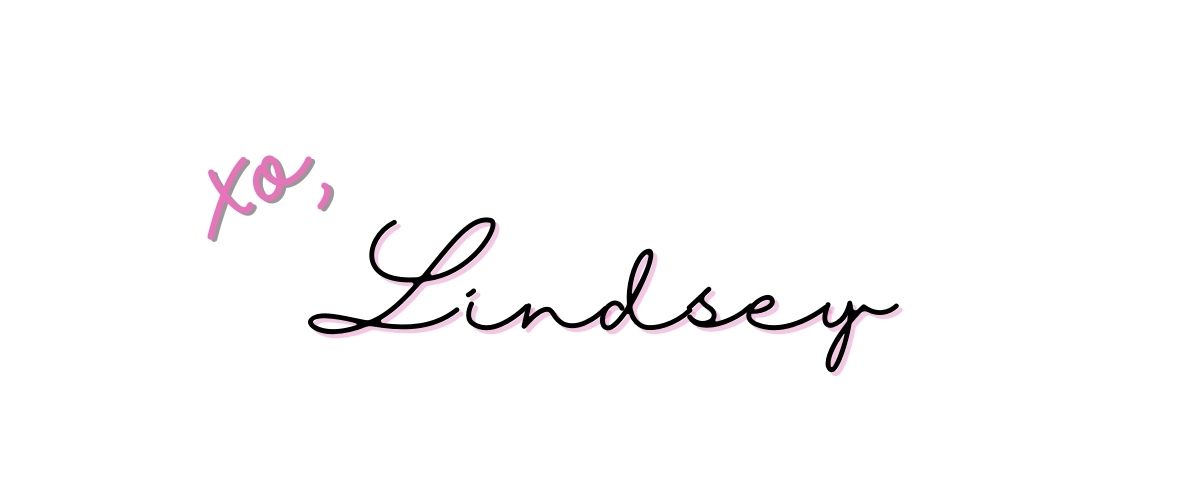Are you struggling with pain from breastfeeding? Here are some tips for relieving sore nipples from breastfeeding and how you can change your breastfeeding experience.
Breastfeeding is often talked about as a magical, amazing experience and bond between a mother and baby. But, what about when it’s not.
Oftentimes moms find themselves in a situation where they find breastfeeding to be painful, burdensome, and not at all pleasant.
I’m a big fan of breastfeeding for the benefits it provides, and I find breast milk to be fascinating. But I wouldn’t say I love all aspects of breastfeeding.
Related: 7 Ways To Help Your Milk Come In Faster After Birth
Breastfeeding has been different for each of my children
I always expect each breastfeeding experience to mirror the previous one, but that hasn’t been the case for me.
I breastfed my older two children, and I am currently breastfeeding my youngest. Each experience has come with its own set of challenges, though I ultimately stuck with it until my children weaned themselves (and I plan to do the same with my youngest.)
With my oldest daughter, she had a severe upper lip tie that made latching difficult. With my second, I had a ridiculous oversupply that resulted in a terrible case of mastitis.
However, my third baby proved to be the most difficult. Lactation consultants said she had no issues with her latch, my supply was abundant without becoming a problem, but nursing her caused excruciating pain in the first two weeks. I’m generally a pretty laid back person, but the pain was so intense at times that it gave me a ton of anxiety and caused a lot of tears.
She’s definitely a mama’s girl and wants to eat frequently, though much of the time she was just eating to soothe herself. My theory is that she was eating so frequently (like, every 45 minutes for the first few days of her life) that I never had time to rest and heal between feeds.
As a labor nurse, I took this difficulty with great defeat. I struggled not only with the pain, but with anxiety as I anticipated the pain of the next feed. I also felt a huge amount of guilt, because what kind of mother is afraid to feed her child?! However, I was determined not to give up, and I’m happy to say that we are still breastfeeding (she is 6 weeks old as I write this!)
Now I want to share what I learned with other moms that might be experiencing the same sort of problems.
I also want to say, that no matter how you feed your baby, you’re doing it right. There is no shame in formula, and there is no shame in pumping. It’s wonderful to live in a world with so many choices!

Disclaimer: please consult a medical professional with any concerns you have. While I am a nurse, I am not your nurse and am not giving you medical advice. This post is meant for entertainment purposes only. FTC: this post contains affiliate links, which means I may earn a small commission at no additional cost to you if a purchase is made using the links from this post. Thank you for your support!
First things first, where is the pain coming from?
Is the pain coming from nipples or breasts?
It’s very important to figure out what is causing the pain and where the pain is coming from! And it’s definitely possible that both hurt.
Nipple pain is common when getting started breastfeeding, and it usually subsides within a week or two, while pain in the breast is often a sign of either clogged ducts or an infection, and may require more medical attention.
Nipple pain when breastfeeding
Typically, nipple discomfort lasts the first few days to weeks of breastfeeding. As your nipples harden and adjust to a nursing infant, the pain should subside and it is not common to have nipple discomfort going beyond the second week. Also, normal nipple discomfort happens with the initial latch, and the pain should subside within a minute or so of nursing.
If the pain is sustained throughout the nursing session or lasts beyond week two, I strongly encourage you to seek an expert’s opinion! There is no reason to suffer any longer than that.
The good news is, it doesn’t have to be so uncomfortable. There are tons of products and things to try to alleviate breastfeeding pain.

Breast pain during breastfeeding
Breast pain can be a common source of pain when breastfeeding, though it is less common than nipple pain.
Here are a few common reasons for breast pain:
- Let-down reflex
Many women experience pain with the let-down reflex. The let-down reflex, also called the milk-ejection reflex, happens when the baby starts breastfeeding and your breasts begin to release the milk from the ducts. Sometimes this let-down is painful, and causes pins and needles or a tight feeling in the breasts. I would describe it as a mild contraction in the breast. According to La Leche League International, a painful let-down is often due to your body getting used to breastfeeding, though it can also be caused by full breasts, clogged ducts, injury, or a yeast infection. The pain from a let-down is brief and may occur a few times during a feed. - Clogged ducts
If you’ve ever noticed a hard, painful lump or area on your breast, you may have a clogged milk duct. Clogged ducts are common if you have an oversupply of milk and your breasts are not fully emptying with feeds. If you have a clogged milk duct, the pain would in one area of the breast, and likely only on one side (though you can get clogs in both breasts). You may notice a slower milk flow on that side, especially if you are pumping.
The breast with the clogged duct may also become engorged. Most of the time, your baby can nurse the clog out (don’t worry, it’s safe for them to do so) and the pain will subside after the feed. However, if you still have a plugged duct after a feeding, you should try to relieve it as clogged ducts can cause mastitis. - Mastitis
Mastitis is an infection of the breast that causes a painful lump in the breast, swelling, redness, pain, and often fevers. It is most often treated with antibiotics and tends to be more uncomfortable than a clogged duct. You should call your doctor if you are concerned you have mastitis.
What to do if breastfeeding hurts
1. Have your baby evaluated for lip and tongue ties
If you pull up your baby’s lip and see that it is attached to the gum, they may have a lip tie. This will prevent their lips from being able to suction properly around the nipple.
If you notice your baby does not have great movement of their tongue, or that their tongue cannot extend out of their mouth, they may have a tongue tie.
A lactation consultant or your child’s pediatrician can assess for tongue and lip ties. It used to be common practice not to fix ties, but most pediatricians and pediatric dentists will actually encourage a tongue or lip tie revision. It is typically a quick office procedure and can fix the problem almost immediately!
2. Change up your position
If you’ve been nursing in the cradle position, try the football hold! Changing your baby’s position can change the way they pull the nipple. Here is a great list of breastfeeding positions to try.
3. Use a good nipple cream/butter
In between feeds, apply a thick layer of nipple cream – it’s one of the most important breastfeeding must-haves. Earth Mama’s nipple butter is organic, non-GMO, and you don’t need to wash it off before feeding. It does a great job of soothing the skin!
4. Gel pads
After crying to my pediatrician about the pain with breastfeeding, she offered me a few samples of these gel pads. It made a huge difference!

These gel pads will allow you to heal and keep things from brushing or rubbing against your sore nipples. I found them to be a game changer for me! You can reuse them for up to 24 hours after. I used them for about four or five days.
5. Ice, ice, baby!

Using ice between feeds, or even before feeding, is extremely soothing. I love these Lansinoh packs because they can be used hot or cold and are very pliable.
6. Wear soft nursing bras and tee shirts
It’s all about comfort! Especially in the first few days. I lived in these nursing sleep bras the first few days, and I still wear them! Stick to soft nursing bras like these, or just wear a soft cotton tee shirt. Breathable materials are a must!
7. See a lactation consultant
Lactation consultants are amazing breastfeeding angels that will help in all aspects of breastfeeding! Your insurance company may even cover the visit.
If you don’t want to leave your sofa, try doing a virtual consultation! Lactation Mamas offers virtual breastfeeding consultations, as well as an online breastfeeding course.
You should never be ashamed to ask for help. It’s one of my biggest pieces of advice for first time moms!
8. Try pumping or hand expressing before nursing
If you have a quick let-down, the nipple pain can be caused by the baby clamping down on the nipple to slow the flow. You can combat this problem by pumping or hand expressing milk before latching your baby.

9. Use a nipple shield
Nipple shields are tricky, and should be used with caution. A nipple shield is a flexible “hat” for the nipple. It is usually used when babies have an issue latching from either lip or tongue ties, or if mom has a flat or misshapen nipple. However, if there is pain from breastfeeding, a shield may also help provide a barrier to the skin.
With my oldest, I used a nipple shield for 4-5 months. She had a lip tie and couldn’t latch without it until she was older. With my youngest, I used it to blunt the pain from nursing. Fortunately, she was able to nurse fine without it as well, and it gave my nipples a little bit of a break when she was cluster feeding.
10. Use a contact guard in bra
If absolutely nothing feels good against your skin, try a contact guard! These sit in your bra and allow air to flow through. For some, this is the only thing that helps and allows the skin to heal.

Breastfeeding isn’t always easy, but hopefully this post will help you alleviate some of the discomforts of breastfeeding!
Remember, it doesn’t matter how you feed your baby, as long as they’re fed.


